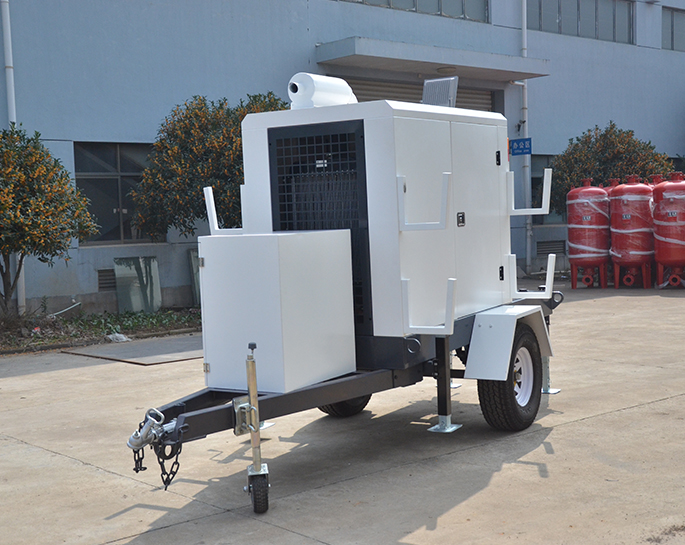Mobile pump trucks, also known as mobile pumping units, operate based on the principles of fluid dynamics and the use of specialized pumps to transport various fluids (such as water, concrete, slurry, or chemicals) from one location to another. The working principle and operation of mobile pump trucks can be broken down into several key components and steps:
Pumping Unit: The heart of a mobile pump truck is the pumping unit, which typically includes a powerful pump, engine, and controls. The pump is responsible for creating the necessary pressure to move the fluid. The engine provides the power to drive the pump and other components. The operator uses the controls to adjust the flow rate, pressure, and direction of the fluid being pumped.
Suction and Discharge Lines: Mobile pump trucks are equipped with suction and discharge lines. The suction line is used to draw in the fluid from the source, while the discharge line transports the fluid to the desired location. These lines are typically made of durable materials to handle various types of fluids.
Fluid Source: The mobile pump truck connects to the fluid source, which could be a water source, a concrete mixer, a slurry tank, or any container with the fluid to be transported. The pump truck can draw the fluid from this source through the suction line.
Fluid Transportation: The pump pressurizes the fluid and moves it through the discharge line to the destination. The pump truck can deliver the fluid over various distances and to different elevations, making it suitable for a wide range of applications, including high-rise construction.
Flow Control: The operator of the mobile pump truck has control over the flow rate and pressure of the fluid. This control is essential to match the requirements of the specific task, such as concrete placement, firefighting, or dewatering.
Boom or Hose: Depending on the application, mobile pump trucks may have an extendable boom with a nozzle or a flexible hose. For concrete pumping, the boom is used to direct the concrete to the desired location within a construction site. In firefighting, the nozzle can be used to spray water or foam. The hose or boom is a key component for accurate and controlled fluid placement.
Mobility: Mobile pump trucks are mounted on wheeled chassis, making them highly mobile. This mobility allows them to reach various areas within a construction site, navigate through urban environments, and access confined spaces.
Maintenance and Monitoring: Regular maintenance and monitoring of the mobile pump truck's components, including the engine, pump, and hoses, are crucial to ensure safe and efficient operation. Monitoring includes checking fluid levels, pressures, and control settings.
In summary, the working principle and operation of mobile pump trucks involve the use of specialized pumps and engines to transport fluids from a source to a destination. These versatile machines offer mobility and control, making them valuable tools for a wide range of applications in construction, mining, emergency response, agriculture, and other industries where the movement of fluids is essential. The ability to precisely control the flow and placement of fluids is a key feature that sets mobile pump trucks apart from other equipment.



